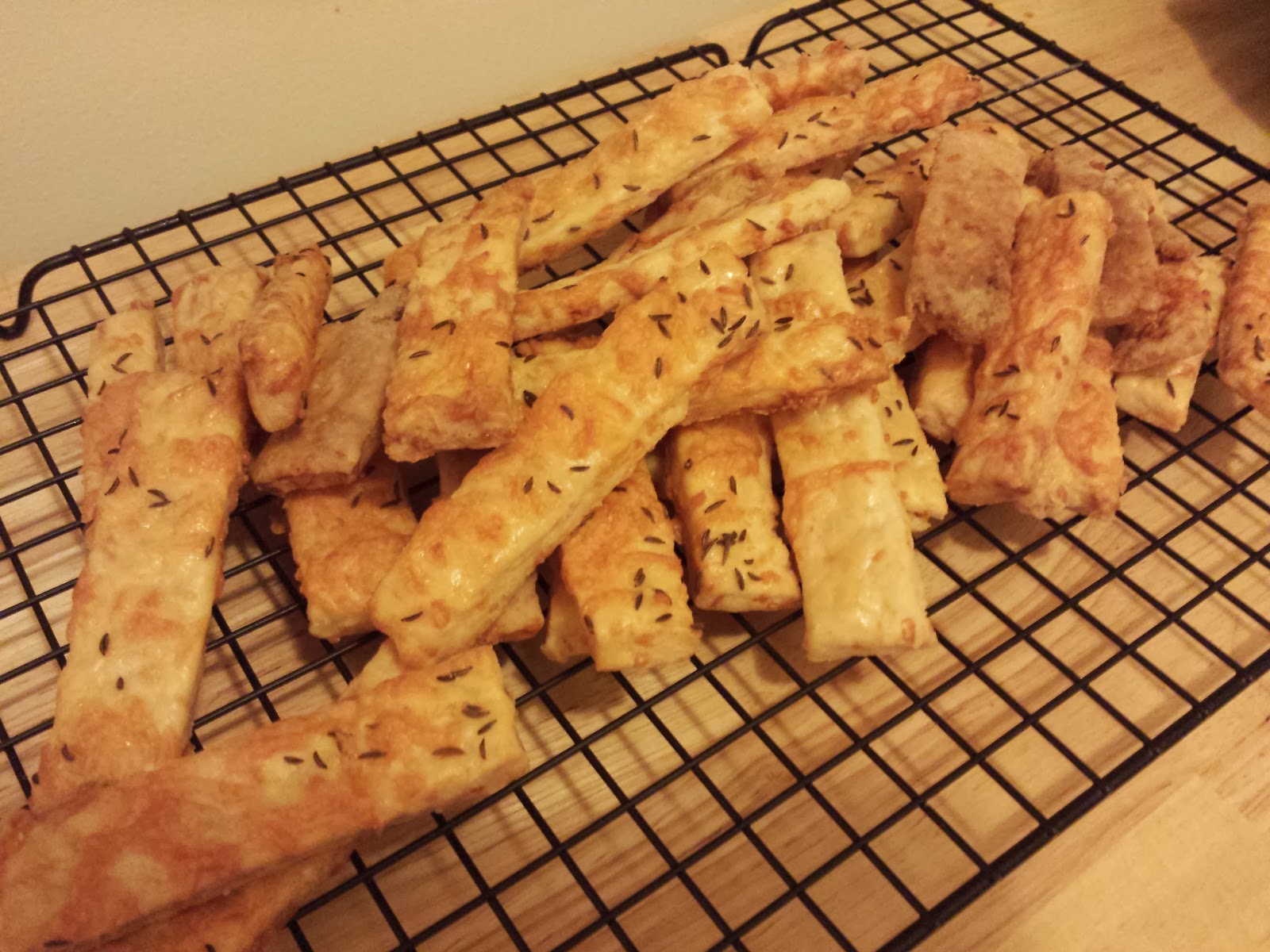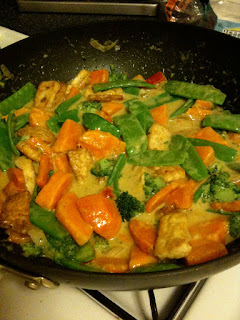Cooking with Pork Blood: Black Pudding
I’m excited to write this post, as I wanted to cook with blood for a long time. So many old recipes use blood, but in the U.S. it’s incredibly hard to find. When Oliver and Jodi mentioned they sold pork blood, I jumped at the occasion and purchased ten pints. Before that, I had only occasionally seen small tubs of frozen pork blood at Asian markets. I was hesitant to purchase any because the packaging had little information, like date or place of origin. Finding local, pasture-raised Berkshire blood was an absolute thrill.
.JPG) |
| North Woods Ranch Berkshire Pork Blood and Back Fat |
.JPG) |
| Use an old cutting board - blood stains are a pain! |
The blood will cook quickly, so it is important to give the garlic and back fat a head start by precooking them. I dice the garlic and fat finely, then gently cook the back fat in a skillet over medium-heat. Once the back fat begins to turn translucent (about 10-15 minutes of cooking), the garlic goes in and both are sautéed for another two minutes. Some meat processors salt their blood, so I don't add any seasoning until the end, when all the ingredients are in.
Once the fat and garlic is cooked, it's time to start heating the blood. A double boiler is perfect to use if you have one, but I just pour the blood into a pyrex mixing bowl and set it on top of a simmering pot. Then I add in the polenta, being sure to stir it regularly to keep it from clumping. The reason the blood is first heated on the stove top is to help thicken the blood and polenta. If cornmeal and back fat are added to the raw blood and then baked in the oven, the fat would float to the top of the pudding and the cereal grains would sink to the bottom. By first cooking the blood in a bowl over simmering water, the mixture will begin to thicken and set, holding all the ingredients in an even suspension.
After 10-15 minutes of heating over gently simmering water, the blood will be coagulating and the polenta will be thickening. The mixture is done when it thickens up as if it were a cook-and-serve pudding. For seasoning, I like a generous spoonful of chile flakes and about 1/2 of dried thyme. Black pepper can be used instead of red pepper for a milder blood pudding. Now is the time to taste and check the seasoning, adjusting if necessary.
After 10-15 minutes of heating over gently simmering water, the blood will be coagulating and the polenta will be thickening. The mixture is done when it thickens up as if it were a cook-and-serve pudding. For seasoning, I like a generous spoonful of chile flakes and about 1/2 of dried thyme. Black pepper can be used instead of red pepper for a milder blood pudding. Now is the time to taste and check the seasoning, adjusting if necessary.
When the pudding is seasoned to taste, the cooked garlic and back fat are stirred into the thickened blood mixture, which is then poured into a greased loaf pan lined with plastic wrap to ease in removing the pudding from the pan.
Cover the pan with a lid or foil and bake for 90 minutes in a 350 F oven in a water bath. I let the pudding cool overnight to firm up, which makes for neater slices; hot out of the oven the blood pudding is delicious, but it is a bit crumbly.
Cover the pan with a lid or foil and bake for 90 minutes in a 350 F oven in a water bath. I let the pudding cool overnight to firm up, which makes for neater slices; hot out of the oven the blood pudding is delicious, but it is a bit crumbly.
For serving, I love blood pudding served with fried eggs. Just grease a skillet and fry a slice or two of blood pudding on both sides. The pudding is fully cooked, so this is only done to warm it up and to get a crispy crust on each side; two minutes per side on medium heat should be perfect.
.JPG) |
| Black Pudding, Eggs, and Buckwheat Toast |
Two pints pork blood
8 oz diced pork fat
1 cup polenta, cornmeal, or steel cut oats
3-5 garlic cloves, minced
2 teaspoons red pepper flakes
1/2 tsp dried thyme
Preheat oven to 350 F.
Saute the diced pork fat over medium heat until the fat begins to turn translucent but does not brown. Add garlic and saute for 1-2 minutes, until garlic just beings to brown. Set pork fat and garlic mixture aside to cool. Save the lard that rendered out from the backfat for greasing the pan later on.
Over a double boiler, slowly heat the blood and polenta. Stir often to keep the polenta from clumping. When the blood takes on the texture of a thickened pudding mix in the back fat, garlic, spices, and pepper.
Using the reserved lard, grease a loaf or terrine pan. Place a sheet of plastic wrap inside the loaf pan, with enough overhanging the edges to wrap completely over the top of the pudding. This will help with removing the blood pudding later. Pour the thickened blood pudding into the pan and cover with the excess plastic wrap.
Place the pan into a large oven-safe dish or roasting pan and fill the larger pan with hot water to come half way up the sides of the loaf pan.
Bake at 350 for 75-90 minutes, until the pudding reaches 165 F on an instant read thermometer.
The pudding can be sliced and enjoyed warm, or once cooled it can be sliced and fried in a skillet to crisp both sides.
More Recipes for Pork Blood Using North Woods Ranch Berkshire Hogs:
French Boudin Noir Sausage
Polish Kiszka Sausage
.JPG)
.JPG)
.JPG)
.JPG)


Comments
Post a Comment